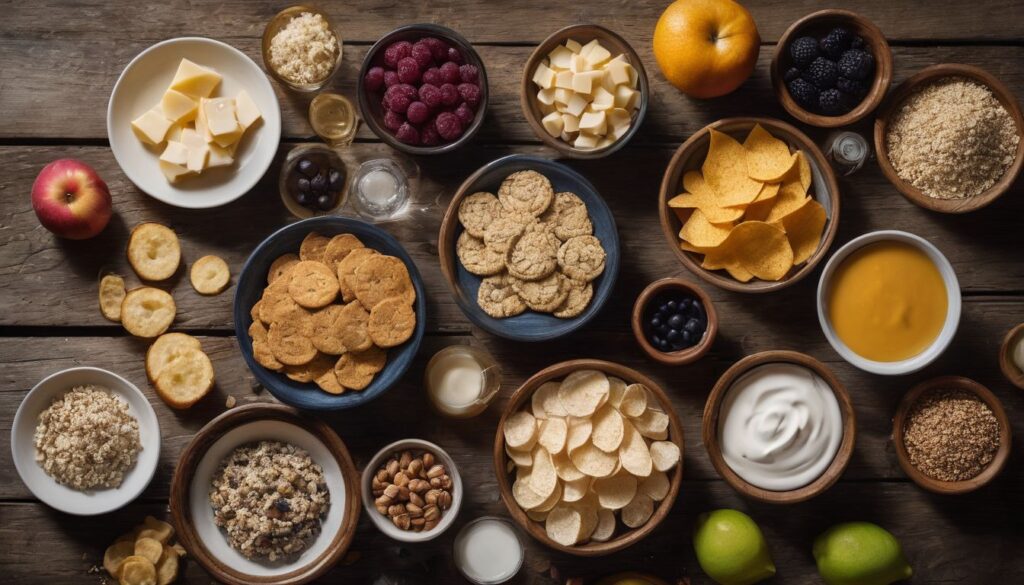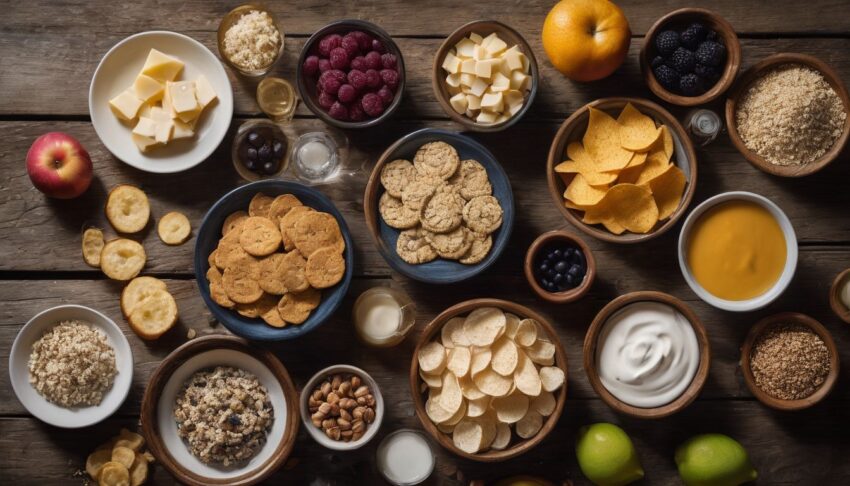
Navigating the World of Gluten and Dairy Free Food: A Comprehensive Guide
In recent years, the demand for gluten and dairy free food options has surged. This isn’t just a fleeting trend; it reflects a growing awareness of dietary sensitivities, allergies, and the impact of food choices on overall health. Whether you’ve been diagnosed with celiac disease, lactose intolerance, or are simply exploring the potential benefits of eliminating these ingredients from your diet, understanding the landscape of gluten and dairy free food is crucial.
Understanding Gluten and Dairy
Before diving into the world of gluten and dairy free food, it’s essential to understand what these substances are and why some individuals need to avoid them.
What is Gluten?
Gluten is a protein found in wheat, barley, and rye. It’s responsible for the elastic texture of dough and gives baked goods their characteristic chewiness. For individuals with celiac disease, an autoimmune disorder, consuming gluten triggers an immune response that damages the small intestine. This damage can lead to malabsorption of nutrients and a range of health problems. [See also: Celiac Disease and Gluten Sensitivity: Understanding the Differences]
What is Dairy?
Dairy refers to milk and products derived from mammals, primarily cows. Dairy contains lactose, a sugar that some individuals have difficulty digesting due to a deficiency in the enzyme lactase. This condition is known as lactose intolerance and can cause symptoms like bloating, gas, and diarrhea. Dairy also contains proteins like casein and whey, which can trigger allergic reactions in some individuals.
Why Choose Gluten and Dairy Free?
The reasons for adopting a gluten and dairy free food lifestyle vary widely. Some of the most common include:
- Celiac Disease: As mentioned earlier, this autoimmune disorder requires strict avoidance of gluten.
- Lactose Intolerance: Individuals with lactose intolerance can experience digestive discomfort after consuming dairy products.
- Gluten Sensitivity: Also known as non-celiac gluten sensitivity (NCGS), this condition causes symptoms similar to celiac disease but without the intestinal damage.
- Dairy Allergy: An allergic reaction to dairy proteins can cause a range of symptoms, from mild skin rashes to severe anaphylaxis.
- Autoimmune Diseases: Some individuals with autoimmune diseases like Hashimoto’s thyroiditis or rheumatoid arthritis find that eliminating gluten and dairy helps reduce inflammation and improve their symptoms.
- General Health and Well-being: Some people simply feel better when they avoid gluten and dairy, experiencing improvements in energy levels, digestion, and skin health.
Navigating the Grocery Store: Finding Gluten and Dairy Free Options
Finding gluten and dairy free food used to be a challenge, but thankfully, the market has expanded significantly in recent years. Here’s how to navigate the grocery store and identify suitable products:
Read Labels Carefully
This is the most important step. Look for products labeled “gluten-free” or “dairy-free.” Be aware that some products may contain hidden sources of gluten or dairy, such as modified food starch (which can be derived from wheat) or whey powder. Always check the ingredient list for potential allergens. [See also: Decoding Food Labels: A Guide to Identifying Allergens]
Explore the “Free From” Aisle
Many grocery stores now have dedicated sections for gluten and dairy free food, making it easier to find suitable products. These aisles often contain gluten-free breads, pastas, cereals, and dairy-free milk alternatives.
Consider Naturally Gluten and Dairy Free Foods
Many whole foods are naturally free of gluten and dairy. These include fruits, vegetables, lean proteins, and many grains like rice, quinoa, and oats (ensure they are certified gluten-free to avoid cross-contamination). Focusing on these foods can simplify your diet and ensure you’re getting plenty of nutrients.
Look for Certification Symbols
Certain organizations certify products as gluten-free or dairy-free. Look for these symbols on packaging to ensure the product meets specific standards. For example, the Gluten-Free Certification Organization (GFCO) provides certification for gluten-free products.
Gluten and Dairy Free Alternatives
Fortunately, there are many delicious and nutritious alternatives to gluten and dairy products. Here are a few popular options:
Gluten-Free Grains and Flours
- Rice: White, brown, and wild rice are all naturally gluten-free.
- Quinoa: A complete protein source that’s also gluten-free.
- Oats: Ensure they are certified gluten-free to avoid cross-contamination.
- Corn: Cornmeal, corn flour, and polenta are gluten-free alternatives.
- Buckwheat: Despite its name, buckwheat is not related to wheat and is gluten-free.
- Almond Flour: Made from ground almonds, this flour is a good source of protein and healthy fats.
- Coconut Flour: A grain-free and gluten-free option with a slightly sweet flavor.
- Tapioca Flour: Used as a thickener and binding agent in gluten-free baking.
Dairy-Free Milk Alternatives
- Almond Milk: A low-calorie option with a mild flavor.
- Soy Milk: A good source of protein and calcium.
- Coconut Milk: Creamy and flavorful, but higher in fat than other alternatives.
- Oat Milk: A naturally sweet and creamy option that’s also environmentally friendly.
- Rice Milk: A good option for those with multiple allergies, but lower in protein and fat.
- Cashew Milk: Rich and creamy, with a slightly nutty flavor.
Dairy-Free Cheese Alternatives
- Nut-Based Cheeses: Made from cashews, almonds, or other nuts, these cheeses can be surprisingly creamy and flavorful.
- Soy-Based Cheeses: Some soy-based cheeses are available, but be sure to check the ingredient list for potential allergens.
- Coconut-Based Cheeses: Made from coconut oil and other ingredients, these cheeses can be a good option for those who are also avoiding nuts and soy.
Dairy-Free Yogurt Alternatives
- Coconut Yogurt: Creamy and rich, with a slightly tangy flavor.
- Almond Yogurt: A good source of protein and fiber.
- Soy Yogurt: A traditional dairy-free option that’s high in protein.
Tips for Cooking and Baking Gluten and Dairy Free
Cooking and baking without gluten and dairy can seem daunting at first, but with a few tips and tricks, you can create delicious and satisfying meals.
Use Gluten-Free Flour Blends
Instead of trying to substitute gluten-free flours individually, consider using a pre-made gluten-free flour blend. These blends are formulated to mimic the texture and properties of wheat flour.
Add Binders
Gluten provides structure and elasticity to baked goods. When baking gluten-free, you may need to add binders like xanthan gum or guar gum to help hold the ingredients together.
Adjust Liquid Ratios
Gluten-free flours often absorb more liquid than wheat flour, so you may need to adjust the liquid ratios in your recipes.
Experiment with Different Dairy-Free Alternatives
Not all dairy-free alternatives are created equal. Experiment with different milk, cheese, and yogurt alternatives to find the ones that you enjoy the most.
Don’t Be Afraid to Adapt Recipes
Many traditional recipes can be easily adapted to be gluten and dairy-free. With a little creativity, you can enjoy your favorite foods without compromising your dietary needs.
Potential Challenges and How to Overcome Them
While adopting a gluten and dairy free food lifestyle can be beneficial, it’s important to be aware of potential challenges and how to overcome them.
Nutrient Deficiencies
Cutting out gluten and dairy can increase the risk of nutrient deficiencies, particularly calcium, vitamin D, and iron. Ensure you’re getting these nutrients from other sources, such as leafy green vegetables, fortified plant-based milks, and lean proteins. Consider consulting with a registered dietitian to ensure you’re meeting your nutritional needs.
Cross-Contamination
Cross-contamination can be a concern, especially when eating out or preparing food in a shared kitchen. Be sure to use separate cutting boards, utensils, and cookware to avoid cross-contamination with gluten or dairy. [See also: Preventing Cross-Contamination: A Guide for Gluten-Free Living]
Social Situations
Navigating social situations can be challenging when you have dietary restrictions. Be prepared to explain your needs to friends and family, and don’t be afraid to bring your own food to potlucks or parties. Many restaurants now offer gluten and dairy free food options, so be sure to check the menu before you go.
Cost
Gluten and dairy free food can sometimes be more expensive than conventional options. To save money, focus on whole, unprocessed foods and cook meals at home. You can also look for sales and discounts on gluten-free and dairy-free products.
The Future of Gluten and Dairy Free Food
The demand for gluten and dairy free food is likely to continue to grow as more people become aware of dietary sensitivities and the potential benefits of eliminating these ingredients. This increased demand will likely lead to even more innovative and delicious gluten-free and dairy-free products becoming available in the future. We can expect to see advancements in food technology that make gluten-free and dairy-free alternatives even more appealing and accessible.
Conclusion: Embracing a Gluten and Dairy Free Lifestyle
Adopting a gluten and dairy free food lifestyle can be a positive step towards improving your health and well-being. While it may require some adjustments to your diet and lifestyle, the benefits can be significant. By understanding the basics of gluten and dairy, exploring alternatives, and being mindful of potential challenges, you can successfully navigate the world of gluten and dairy free food and enjoy a delicious and fulfilling diet.
